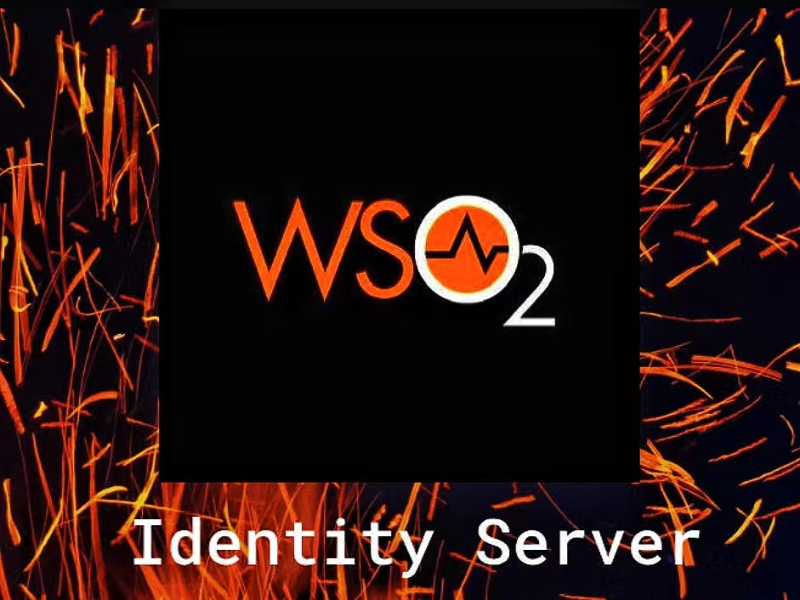- Authentication and SSO are core features in the WSO2 identity server that provide users with a secure and convenient access experience and provide organisations with the means to effectively manage user identities.
- WSO2 identity server provides flexible, secure and user-friendly multifactor authentication capabilities to help organisations improve authentication security and meet compliance requirements. With proper configuration and management, organisations can maintain a good user experience while safeguarding security.
- With identity federation and identity management capabilities, the WSO2 identity server provides a comprehensive identity management solution that helps organisations achieve a unified identity view and secure identity management processes.
The WSO2 identity server is an open-source identity and access management solution designed to help organisations effectively manage their users, identities and security. It provides a range of features including authentication, single sign-on, multifactor authentication and more to enable organisations to achieve secure access control to their applications and services.
Also read: What is open-source routing?
Authentication and single sign-on (SSO)
The WSO2 identity server provides a variety of authentication mechanisms, including username-password authentication, the most basic form of authentication in which the user provides a username and password for authentication; OAuth, an open standard for authorisation that allows a user to access his or her protected resources through a third-party application.
And SAML (security assertion markup language), a language for browser-based single sign-on and authentication and authorisation between identity providers; and OpenID Connect, a standard built on top of OAuth 2.0 that provides a framework for authentication and access to user information. These mechanisms provide users with diverse authentication options while providing organisations with flexible identity management and security.
During the authentication process, the WSO2 identity server protects user credential information through technologies such as encryption and secure hashing, preventing credentials from being maliciously obtained and misused. It also supports security standards and protocols to ensure security during data transmission.
Single sign-on (SSO) allows users to access multiple associated applications without having to re-enter credentials once they have been authenticated. WSO2 identity server implements single sign-on by issuing tokens so that once a user has successfully logged in and obtained a token, they have access to all the applications that have been integrated with the identity server for the duration of the session.
SSO improves the user’s access experience as they can access all associated applications with a single login, eliminating the need to enter a username and password each time. This reduces the operational burden on users and improves their satisfaction and efficiency.
Single sign-on also contributes to increased security because it reduces the likelihood of users forgetting their passwords or entering them incorrectly. The WSO2 identity server supports the monitoring and management of single sign-on sessions, as well as the implementation of additional security controls, such as session management and single sign-on logout, to ensure the security of user identity and access.
Also read: Who is Paul Graham? Co-founder of Y Combinator is an acclaimed author and open source advocate

Multifactor authentication
WSO2 identity server provides multiple authentication factors, including knowledge factors (such as passwords or personal identification numbers), ownership factors (such as mobile phones, hardware tokens, or email), and biometric factors (such as fingerprints, facial recognition, or iris scans).
Organisations have the flexibility to configure multifactor authentication based on their security needs and risk management policies. Administrators can define the type and number of authentication factors required and customise the configuration based on users, applications or specific access scenarios. This flexibility enables organisations to choose the right authentication method to protect their sensitive resources based on different security risk levels.
Multifactor authentication provides a higher level of security assurance than traditional single-factor authentication. By combining multiple authentication factors, such as passwords and mobile verification codes, the risk of identity theft can be greatly reduced. WSO2 identity server protects the security of authentication factors through technologies such as encryption and secure transport, and provides monitoring and auditing capabilities to ensure the security and compliance of the authentication process.
WSO2 identity server designs user-friendly interfaces and processes to balance security and user experience. For example, it provides a remember device option, which allows users to authenticate once on a specific device, with subsequent visits eliminating the need for multifactor authentication.
Many industry standards and regulations require organisations to implement multifactor authentication to protect sensitive data and personally identifiable information. WSO2 identity server provides a multifactor authentication solution that meets compliance requirements such as GDPR (general data protection regulation), helping organisations to meet the requirements of the relevant regulations and mitigate the risk of data breaches and security breaches.
Identity federation and identity management
WSO2 identity server allows organisations to integrate multiple identity providers, including LDAP, Active Directory, social media identity providers and more. With identity federation, users can authenticate using their existing identity credentials, eliminating the need to create separate accounts for each application.
WSO2 identity server supports multiple identity federation standards, including SAML, OAuth, OpenID Connect, and more. This enables organisations to work seamlessly with different identity providers and applications, enabling identity federation and single sign-on across domains and organisations.
Identity federation enables organisations to manage and view user identity information on a unified platform, regardless of the identity provider in which it is stored. Such a unified identity view helps simplify user management and access control, improving management efficiency and user experience.
WSO2 identity server provides comprehensive user management functions, including user creation, modification, and deletion. Administrators can manage users and control their access rights and role assignments through the management interface or API.
Organisations can create different roles and assign users to the corresponding roles. Role management simplifies the management of user access rights and ensures that users are given appropriate permissions and access to resources.
WSO2 identity server allows organisations to manage user attribute information, such as name, email, phone number, and so on. Administrators can define custom attributes and collect and manage information about users as needed.
Identity management functionality also includes auditing and monitoring capabilities that track user action logs and system events and generate appropriate reports. This helps organisations monitor the security and compliance of the identity management process and identify potential security threats or breaches promptly.

